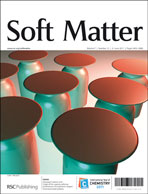A novel strategy for engineering hydrogels with ferromagnetic nanoparticles as crosslinkers of the polymer chains. Potential applications as a targeted drug delivery system
Abstract
An efficient strategy is employed for the preparation of magnetic hybrid hydrogels consisting of functionalized CoFe2O4 magnetic


 Please wait while we load your content...
Please wait while we load your content...